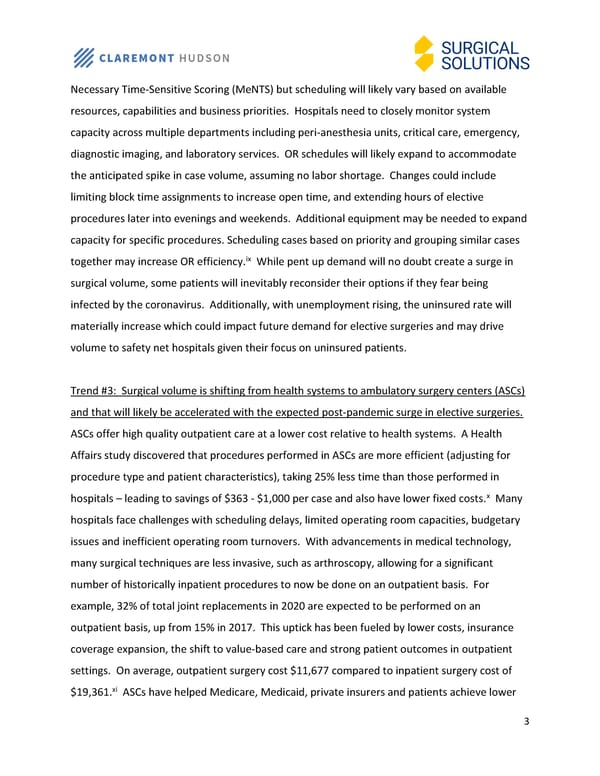Necessary Time-Sensitive Scoring (MeNTS) but scheduling will likely vary based on available resources, capabilities and business priorities. Hospitals need to closely monitor system capacity across multiple departments including peri-anesthesia units, critical care, emergency, diagnostic imaging, and laboratory services. OR schedules will likely expand to accommodate the anticipated spike in case volume, assuming no labor shortage. Changes could include limiting block time assignments to increase open time, and extending hours of elective procedures later into evenings and weekends. Additional equipment may be needed to expand capacity for specific procedures. Scheduling cases based on priority and grouping similar cases ix together may increase OR efficiency. While pent up demand will no doubt create a surge in surgical volume, some patients will inevitably reconsider their options if they fear being infected by the coronavirus. Additionally, with unemployment rising, the uninsured rate will materially increase which could impact future demand for elective surgeries and may drive volume to safety net hospitals given their focus on uninsured patients. Trend #3: Surgical volume is shifting from health systems to ambulatory surgery centers (ASCs) and that will likely be accelerated with the expected post-pandemic surge in elective surgeries. ASCs offer high quality outpatient care at a lower cost relative to health systems. A Health Affairs study discovered that procedures performed in ASCs are more efficient (adjusting for procedure type and patient characteristics), taking 25% less time than those performed in x hospitals – leading to savings of $363 - $1,000 per case and also have lower fixed costs. Many hospitals face challenges with scheduling delays, limited operating room capacities, budgetary issues and inefficient operating room turnovers. With advancements in medical technology, many surgical techniques are less invasive, such as arthroscopy, allowing for a significant number of historically inpatient procedures to now be done on an outpatient basis. For example, 32% of total joint replacements in 2020 are expected to be performed on an outpatient basis, up from 15% in 2017. This uptick has been fueled by lower costs, insurance coverage expansion, the shift to value-based care and strong patient outcomes in outpatient settings. On average, outpatient surgery cost $11,677 compared to inpatient surgery cost of xi $19,361. ASCs have helped Medicare, Medicaid, private insurers and patients achieve lower 3
 Operating Room Insourcing Versus Outsourcing Page 2 Page 4
Operating Room Insourcing Versus Outsourcing Page 2 Page 4